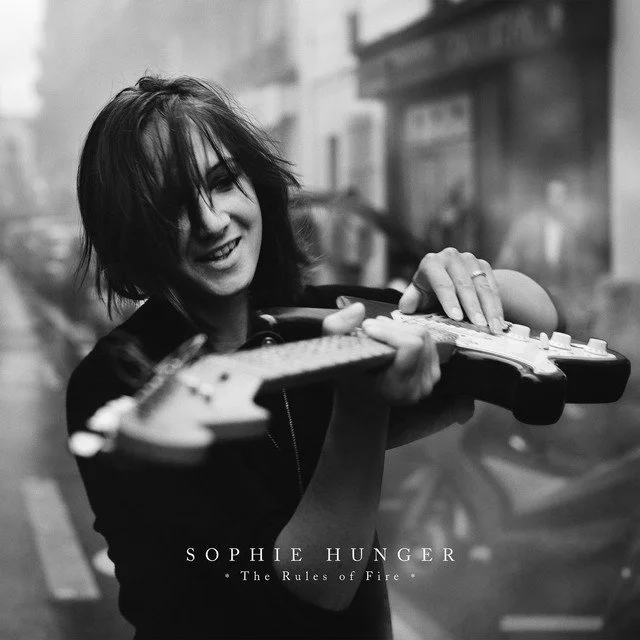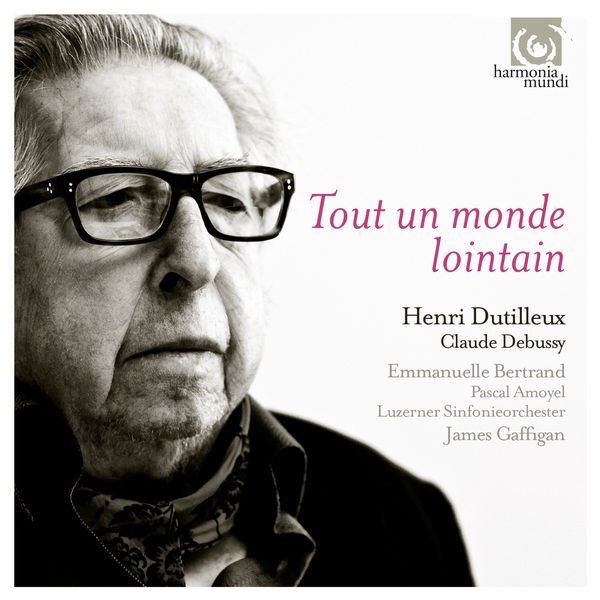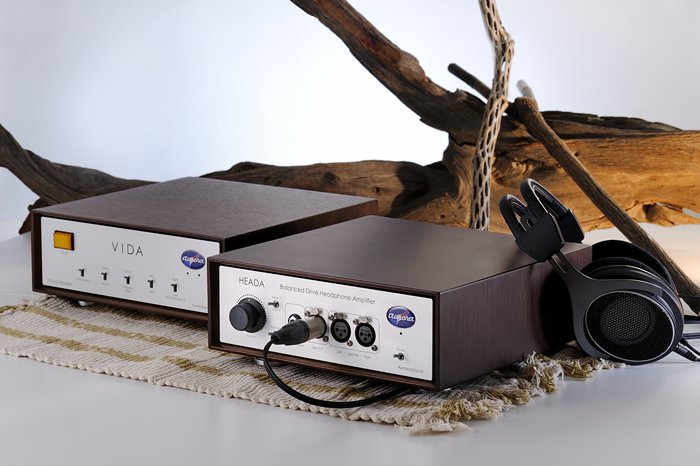AURORA HEADA HPA - REVIEW
AURORA HEADA HPA
Santa Barbara, California became a refuge from San Francisco for me in my adolescent years. Santa Barbara was quiet and clean, the streets were tree-lined, the people talkative and friendly, and the sidewalks barely, if at all, paved. This last point, the ‘barely paved’, I experienced as wonderfully freeing. And it assured me that I was no longer in San Francisco, with nature suppressed to exhaustion beneath oceans of concrete. The protruding, knurled roots of the towering trees which formed the beginnings of arches across its streets, brought welcome and ease to Santa Barbara. Nature was free here to ‘intrude’ on my daily strolls to the park, the boys’ club, the gym, the beach, a new friend’s home.
My cousins, football players, college age, were seldom if ever home. This gave me free rein to turntables and all available records, which, though few, became familiar prized companions, and a well kept secret. The fellas in SF just wouldn’t understand my new found musical loves—folk and rock and a little bit of country. Santa Barbara was where those genres first said hello and gave a goodly and very welcomed accounting of themselves. Fleetwood Mac, the Doobie Brothers, Cat Stevens, Jefferson Airplane, Marshall Tucker, and a number of others spent much time with me and I with them.
I remember the end of that same summer. I did not want to go home. Why leave Santa Barbara? I had all musical genres available to me, right out in the open, including my beloved jazz and blues. I had two very large, muscle-bound cousins, who forever had my back. And, now and again, they’d introduce me to some rather cute girls, younger siblings of their friends. Despite the tears and protests and the begging, I was forced to return home, to San Francisco and confined musical appreciation. That, however, is another story.
In many ways, the new music was an expansion, a wonderful expansion, that I did not want to let go. I kept my new found musical friends and I kept them secret for long years, as my record collection grew across genres and the ‘expansion’ continued.
Personal audio—headphone amplifiers and headphones—has in many ways provided a different kind of expansion for me, an expansion that allows me to hear my music in, well, a more personal and often more profound way. Don’t get me wrong, I still love speakers and amps, etc. But through headphones I have gotten closer to the music than I ever have before. The detail, nuance, the clarity, the whispered barely audible phrases and voices – only a handful of speakers can provide their like (though at much higher volume levels). And there is no room, thus no room reflections/vibrations/nodes, distance from the speakers, etc to ‘mess’ with the music. I have also learned via personal audio that you can have it all! All? Incredible resolution, detail, transparency, and sweet, mesmerizing music. It took the better part of my life to discover this, though perhaps what sparked it all was the confluence of technology and my timely reintroduction to headphones.
This rather long and winding road brings me to my review of the Aurorasound HEADA headphone amplifier which has been responsible for yet another ‘expansion’. It is an expansion in how I listen to and enjoy music and it has been both eyeopening and wonderful. But be warned, if you love music, are a lover or a novice of headphones, or just headphone-curious the HEADA is addictive in the extreme! Though it is not an addiction that compromises one’s health. Thank goodness!
REFRAIN: Unlike most reviews, this review will be non-sequential, as it will start, below, with how the equipment actually sounds and not the process of physically “undressing” it and/or laying out its various parts, specifications, etc. Think of this review then, as a non-linear movie—Memento, Kill Bill, Arrival, Eternal Sunshine of the Spotless Mind, The Terminator, In the Shadow of the Moon, The Queen’s Gambit, etc—that, likewise, starts at the end and winds its way to the beginning.
The Sound
The Aurorasound HEADA has a beautifully refined musicality. In other words, it renders one’s music like only a rare handful of headphone amps can, at any price point. What Sugano Koetsu (Koetsu) and Haruo Takeda (Miyabi) are to phono cartridges, Aurorasound’s Shinobu Karaki appears to be to headphone amplifiers or to this headphone amplifier. The HEADA is truly superb in its ability to communicate the ebb and flow of the music and to capture the venue—jazz club, concert hall, studio, chamber, church, etc—where the music was performed. And it does this with such ease and refinement and musicality, that long hours will pass unnoticed as you listen.
Shinobu Karaki, Aurorasound’s founder and CEO, brings his expertise both as an engineer with nearly three decades experience, and a musician and music teacher to the HEADA headphone amplifier. To date, it is the only one of his products that I know, but I am quite anxious to hear more of Aurorasound’s products and discover their various gifts.
The HEADA is a solid state amplifier and therefore is completely without tubes. However, one would be hard pressed upon listening to not question the prior statement, so musical and fluid, natural and rich is the music rendered by the HEADA. And as a solid state headphone amplifier it is extremely quiet with a vanishingly low noise floor, and detailed, with exceptional dynamic range and refinement. Refinement? Perhaps one way to describe it is an ease, a supreme ability and confidence to perform, much like a virtuoso pianist or violinist. There is no trying to do or to impress, or nervousness, there is just the consummate ease of the master, ‘doing.’ It is in this way that the HEADA performs and it did this with every headphone in house (see Systems).
The HEADA’s volumetric cube—its soundstage or how it recreates the original venue is, well, very accommodating. It can be exceptionally wide and deep with a given headphone, should that headphone’s proclivities be such. Or it can be intimate or even cavernous as the HEADA was with the Abyss AB1266 Phi TC and the ZMF Atrium. The HEADA’s exactitude of the soundstage in relation to performers—spacing, layering and depth of layering from front to back, positioning—would be, I imagine, enviable for most headphone amplifiers. And this soundstage recreation comes with a nonchalance, refinement and ease that I always found captivating and calming, like good vinyl albums.
The Aurorasound HEADA was paired with a front-end that consisted of the Grimm Audio MU1 streamer, the Mola Mola Tambaqui DAC, the Aurender N30SA, Bricasti Design M1SE, and the DENAFRIPS Terminator II DAC. The headphones used were the Abyss AB1266 Phi TC (review coming), the Dan Clark STEALTH (review coming), the ZMF Atrium, ZMF Véríté, and the Meze Empyrean and LIRIC. Audience Front Row cables/wires and RSX power cables connected the system. The Audience AdeptResponse aR6-T4 provided service as the power conditioner. The HEADA absolutely merited Top-of-the-Line (TOTL) pairings.
Bass
In many respects, the ‘Bass’ section of this review is very similar to that of the Abyss AB1266 Phi TC as they were partners in musical forays for the deep dives into the Holy-Bass-Head-Grail. Theirs was an exceptional synergy and their various excursions memorable.
[A Repeat, see Abyss AB1266 Phi TC] “Tight. Blistering. Best (as in good, better, best). There was some trepidation, I must admit, to the Aurorasound HEADA driving the Abyss AB1266 with its 2 watts of power. The Abyss at 88db is not at all very efficient and its 50 Ohm impedance requires a good deal of power run across it. So, I began easily, though I had both the HeadAmps GX-S Mini (4 watts) and GS-X Mk II (6 watts) and the LT Z10e (3 watts) to choose from, should things go ‘south’. But I would not need them. I began with Dave Holland’s “B-40/M23-6K/RS-W” (Emerald Tears, ECM) as a first demonstration of dexterity, speed, inner detail, and tonal/timbral shading. In brief, it was an electrostatic rendering—speed, transparency, resolution, copious inner detail—with top to bottom planar weight, and a tight, fast bass. Marcus Miller’s Power (M2, Concord) then rolled in and all fears were quickly put aside, as the HEADA’s 2 watts ‘got down(!)’ with the Abyss AB1266. Nary a clip was heard all through the night. The true test next —Eiji Oue’s V. Infernal Dance of King Kashchey (Stravinsky, Reference Recording)—and as it cued, ominously, all senses were alert for the faintest trace of clipping. Powerful and thunderous was the opening with the massed tympani (7) and, again, there was nary a trace of clipping. There was, in fact, a beautifully rendered movement replete with bombast, sub-bass dives and lightning fast dynamic shifts. If it could be so with the HEADA’s 2 watts all others need not fear. And suffice to say, the HEADA’s performance with the Abyss AB1266 was ‘over the moon’!
Midrange
Musical. Incredibly musical. Detailed. There’s just no getting around that one. And yes, textured with sublime tone/timbre, and beguilingly immersive. Sophie Hunger’s Walzer für niemand (Rules of Fire, Two Gentlemen) is more, well, realistic than I have heard it before. The piano is resonant, full, a force, its tone beautifully realized. Sophie’s voice is more dimensional, palpable, better resolved and articulated. No detail went uncovered, all laid bare for the experience. This duo—HEADA, Abyss AB1266—and the Mola Mola Tambaqui feeding them, is truly outstanding. If I had thought that other combos instigated moments of “sublime-momentary-catatonia” I was not prepared for what this combo delivered. Though, I must admit, the LTA Z10e’s ($6,995) greater clarity, tubed magic, and additional power upped “sublime-momentary-catatonia” to “sublime-long-pause-catatonia.” Muddy Waters’ “Country Boy” (Folk Singer, Geffen) strolls in with Muddy front and center, his voice clear, resonant, textured, dimensional. It’s been good before, but…Wow! Stage left Clinton James (drums), with Willie Dixon (double bass) at depth, and stage right Buddy Guy (guitar), and it is not a soft spread, as they are firmly locked in space, at distance, with a clearness and alacrity that says “electrostatic, baby!” Ummm, ummm good.
NOTE: Though I could relate a similar enthralling experience from the HEADA and Abyss AB1266 combos review, and simply repeat what I said there, I instead chose other midrange works to test both their synergy and their ‘resolve’ and not your patience.
Treble+
Musical. Textured. Extended. Air. Lots of Air. The Aurorasound HEADA as coupled to the Abyss AB1266 Phi TC unfolds a wealth of information, while covering from end to end the frequency spectrum with meticulous care and fidelity. Emmanuelle Bertrand’s “Tout un monde lointain…: I.-V.” (Dutilleux & Debussy: Works w/Cello, harmonia mundi) begins, slowly. The brushes across tympani faces are stark and beautifully resolved. “Have they always been there?” Then the unfolding into far reaching spaciousness reveals the Luzerner Sinfonieorchester at depth, flanking Emmanuelle, who is centerstage. Her cello’s notes, somber, melancholy, gain purchase in a slow, energetic, ‘otherworldly’ dance. This beginning is more emotive, more spacious, better resolved and more clearly articulated than I have ever heard it. It is, no doubt, the interplay of the HEADA’s remarkable musicality and its ‘technical’ wherewithal—transparency, resolution, detail retrieval, staging abilities—as wed to the Abyss AB1266 (see review). I repeat this last movement several times as there is a sorrowfulness that is both heartrending and enchanting. What is going on here? Yes, Emmanuelle Bertrand is spectacularly talented, but there is much about this that is new and so incredibly involving as to instigate “sublime-long-pause-catatonia”, yet again. The HEADA is truly special in the way that it portrays, conjures, reveals, renders one’s music. And regardless of headphones—Meze Empyrean or LIRIC, ZMF Atrium or Véríté, Dan Clark STEALTH—it mates beautifully. It may well be underpriced.
The Wrappings and Accessories
The Aurorasound HEADA headphone amplifier comes in a rather nondescript outer brown cardboard box, that is wrapped tight as a drum with cellophane. It is neither too heavy nor too light.
Upon opening the outer box one finds a styrofoam inner box wherein the HEADA is comfortably nestled in a bubble-wrapped outer dress and a smooth, padded-paper wrapper. The inner box also contains the power cord.
The HEADA’s overall packaging is modest, protective, nicely done, and easily summed up as highly-functional minimalism. No one will guess that a $3,000 headphone amp lies nestled within and this is, of course, to one’s advantage.
Design—Look, Feel, and Technology
The Aurorasound HEADA is easily kindred to the design aesthetic of Mid Century Modern and in this respect it is right up my alley, and, as pleased as punch, sitting next to an Eames chair.
A relatively clean, purposeful front metal facade contains a volume control to the far left, with a variety of headphone outputs to the right.
Its rear face is well appointed, functional, and clean with a single-ended ‘Through Input’, several inputs, and an IEC—power socket.
The HEADA is wrapped in a beautiful, dark, real-wood case that is equipped with solid metal feet, which serve as insulators. It is small enough to fit upon most, if not all, desks and weighs relatively little. All round the Aurorasound HEADA is a beautifully executed headphone amplifier replete with all necessary options.
FUNCTIONALITY
The HEADA is easy-as-pie to operate.
Plug it in
Affix XLR or RCA interconnects or both
Select headphone output
Check that the volume control is at ‘zero’ (to the far left)
Play music and adjust volume accordingly
The specifics of the front face of the HEADA finds an aluminum volume knob, a 1/4”/6.1mm (RCA) headphone output, a four-pin, balanced (XLR) output, and dual three-pin balanced (XLR) outputs for a stereo connection.
The HEADA, in this respect, provides a host of headphone output options for all of the Top-of-the-Line (TOTL) headphones, and given its choice of High Gain or Low Gain will pair seamlessly with In-Ear-Monitors (IEMs).
And the rear face sports from left to right an IEC—power socket—at the top left, ‘Though-Out’ RCAs beside it, and two sets of inputs—a single RCA input (input 2) and a ganged RCA and XLR input (input 1).
Conclusion
The Aurorasound HEADA headphone amplifier is musical from ‘Square One’, ‘Jump Street’, ‘Scratch’, or, practically, as soon as you turn it on, though it gets worlds better thereafter. It is a beautifully, carefully designed endgame component to pass down. Or perhaps to take to the other side. Solid state dynamics, resolution, detail retrieval, and spaciousness married to tube liquidity, remarkable tone/timbre/texture, offer #%$*@!musical bliss. What more could one ask for?
Coupled to the Abyss AB1266 Phi TC (88dB, 50Ω) which the Aurorasound HEADA drove beautifully, it was lights out! Lights out for competitors that are anywhere near its price point. Far too many nights I sat in the candlelit dark and listened intently and with great delight (if not bliss) to the HEADA, Mola Mola Tambaqui or Bricasti Design M1SE, Abyss, the ZMF prodigies—Atrium, Véríté—and the Mezes—Empyrean, LIRIC—and the STEALTH (Dan Clark)—with exceptional results. As I listen now to Jean-Guihen Queyras and Alexander Melnikov’s Chopin, Rachmaninoff Cello Sonatas (Harmonia Mundi) the music passes far too quickly and too beautifully, it is sublime. Then follows Charles Mingus, Presents Charles Mingus (Candid), and Charles, Eric Dolphy, Ted Curson, and Dannie Richmond are quite ‘candid’ and having way too much fun. And, again, it passes much too quickly. Mesmerizing.
If you’re looking for an endgame headphone amplifier and even if your headphone amplifier is more expensive, try this one, you may be quite surprised. That said, the Aurorasound HEADA headphone amplifier is a top echelon component and an easy DIAMOND AWARD winner.
Pros: Again, musical from ‘Square One’, ‘Jump Street’, ‘Scratch’, or, practically, as soon as you turn it on… Solid state dynamics, resolution, detail as married to tube liquidity, engagement, and musical bliss and oh so natural, natural, natural!
Cons: Computing… Still computing… (as in nothing yet)
THE SYSTEMS
Grimm Audio MU1 Streamer
Mola Mola Tambaqui DAC
Abyss AB1266 Phi TC
Dan Clark STEALTH
Meze EMPYREAN
Meze LIRIC
ZMF Atrium
ZMF Atticus
ZMF Vérité
Audience Front Row, RSX cables/wires
AdeptResponse aRS-T4 power conditioner
2.
Aurender N30SA Streamer
Bricasti Design M1SE DAC
DENAFRIPS Terminator II
Abyss AB1266 Phi TC
Dan Clark STEALTH
Meze EMPYREAN
Meze LIRIC
ZMF Atrium
ZMF Atticus
ZMF Vérité
Audience Front Row, RSX cables/wires
AdeptResponse aRS-T4 power conditioner
The Company
AURORASOUND
www.aurorasound.jp/english
AURORASOUND HEADA Headphone Amp ($2,999)
The Distributor
High-End Electronics
Alfred Kainz
highend-electronics.com
office@highend-electronics.com
Phone: 760-490-2410







